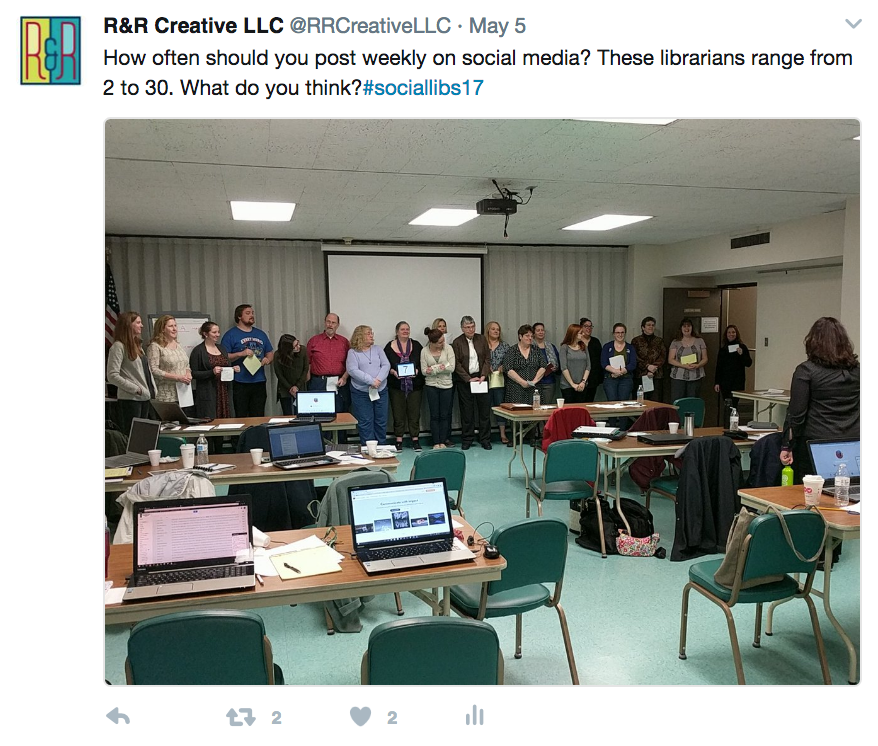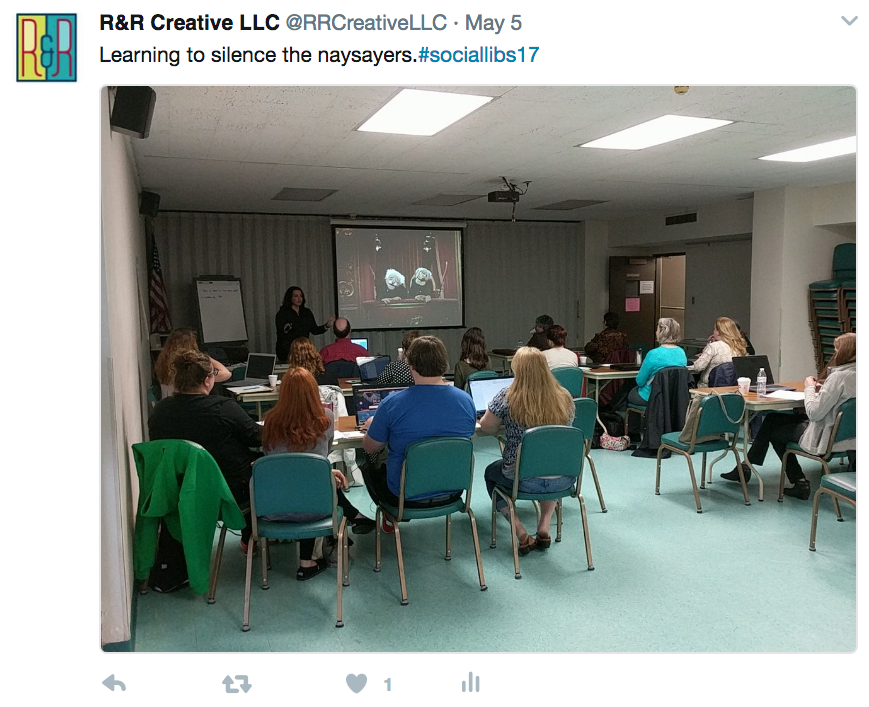by Rachel Dukeman | Oct 9, 2020 | Thought Leaders
Are Nonprofit Boards Perpetuating White Supremacy?
Let’s start with a question: What are the main reasons nonprofits ask people to join their Board of Directors?
When I ask clients this question, I often hear answers that many nonprofits ask people to join their Boards for fundraising purposes — either that the person has the means to donate or is well-connected to those who do. I recognize that ‘not all Boards’ are guilty of this all the time. And, more pragmatically, some nonprofits have working Boards who volunteer and are heavily involved in programs.
Let’s move forward with the premise that many nonprofits look at Boards as a fundraising tool. How better to involve your highest level donors than by involving them in leading the organization, right?
The correlation between fundraising and a Board of Directors stems from nonprofits’ structure where the Board is the governing body — and with that governance comes fiduciary responsibility. A fiduciary duty means the person is accountable for the financial management of the organization. For nonprofits, one aspect of this means ensuring the organization spends money in the fulfillment of its mission.
We can talk more about other aspects of fiduciary responsibility later (in fact, we can probably have multiple discussions on ethics, checks and balances, conflicts of interest, and more). For right now, I want to hone in on how the premise that nonprofit Boards are fundraising tools perpetuates white supremacy.
(Yes, there are Black, Indigenous, and People Of Color (BIPOC) with financial means. There’s plenty. And they should and do have roles on nonprofit Boards. That’s not the point.)
What’s important is that: By looking at fundraising acumen as the main criteria for members of a Board of Directors, nonprofits encircle themselves with people who benefit from generational wealth and privilege (read: inheritance of property or money, traditions of higher education, etc…. read: White people.)
When nonprofit Boards are majority White, they reinforce views of White people in positions of power. Who decides the direction of the nonprofit? Who is in the room where it happens?
By treating a Board of Directors as a nonprofit wallet, nonprofits belittle the Board’s fiduciary responsibility and, in turn, do not benefit from the financial management structure intended. Where are the checks and balances when the decision-makers are the main financiers?
The nonprofit industry needs to re-visit why nonprofit Board of Directors exist. Boards that comprise members who hold the nonprofit accountable to their mission, provide financial management, and improve program delivery, will better represent the audiences they serve thus becoming more diverse — and be more successful in fulfilling their mission.
Solutions to start with:
1. Stop judging the financial health of a nonprofit by 100% Board giving. Foundations need to stop looking at that as a metric. Donations do not equal financial management.
2. A nonprofit board is not a collection of funders or a fundraising department. Quit treating it as such.
3. No more “Give or Get” policies. That is not the measure of a Board member’s accountability or success.
4. Invite on and develop Board Members who will uphold their fiduciary responsibility.
That’s a good place to start. What else should we do??
—-
If anything in here has you raising your eyebrows, here is some further reading:
https://www.nytimes.com/interactive/2019/08/14/magazine/racial-wealth-gap.html
https://boardsource.org/fundamental-topics-of-nonprofit-board-service/roles-responsibilities/
https://nmaahc.si.edu/learn/talking-about-race/topics/being-antiracist
—-
All opinions are my own and do not reflect or represent any of the organizations with which I work, have worked, or have been, am now, or will be affiliated. In an effort to get this done promptly, I favored publishing over perfection and as such welcome corrections, edits, additions, and constructive feedback.
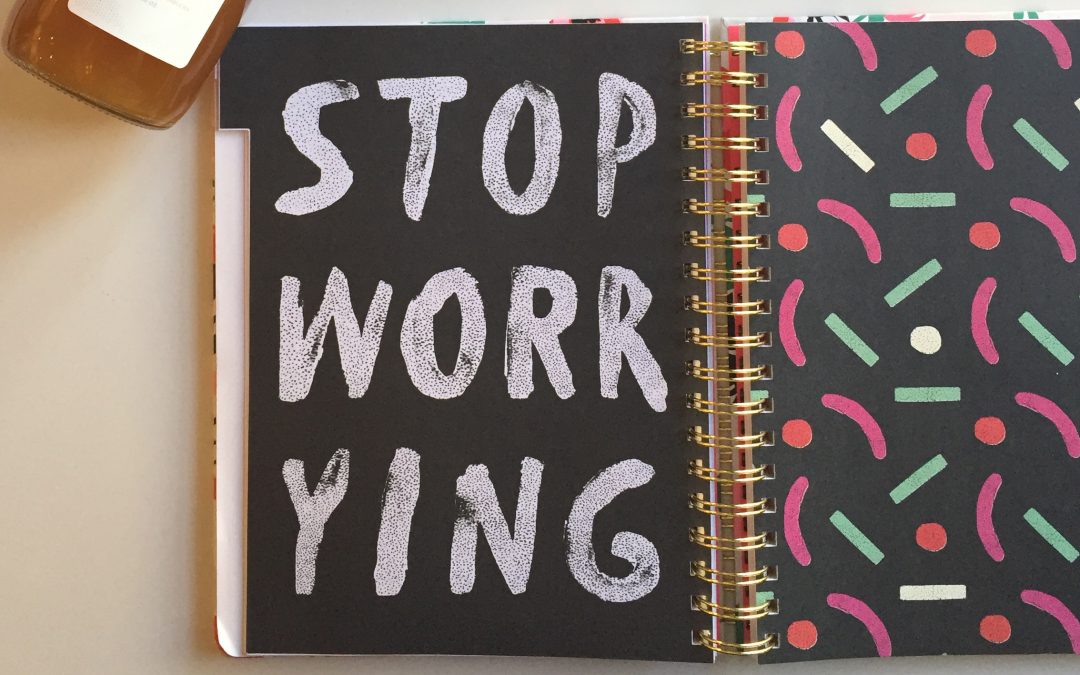
by Rachel Dukeman | Jul 11, 2017 | Action Planning, Design, Entrepreneur, Mindfulness
Your work space is important. It can dictate your productivity and vastly improve your mood. After dozens of projects with dozens of clients and three years in the same office, I’ve decided to actualize my daydreams and seek out the perfect office space.
I have been craving a comfortable, usable space that would inspire my creativity and embody my passions. I wanted a space to myself that is specifically designed for getting work done efficiently. I needed a space that was conducive to my entrepreneurial lifestyle. For me, that meant a window, a big desk, a “zen den,” and a small space for lunch meetings and quick brain breaks.
After searching for weeks, I have finally found the dream spot. I am relocating to Southwest Center City next week!
As you may know, I am passionate about balance and mindfulness. In packing up my old office and preparing my new one, I have discovered a few interesting lessons about usability and work habits that I hope will inspire you to think about your work space.
1. Clutter is NOT the answer

Clutter is always the paper note-taker’s biggest problem.
I am a big note taker, and I often lead strategic brainstorm sessions, board retreats, and focus groups. My notes provide me with every tool I need to propose smart solutions to strategic problems, but they also leave behind a war path of clutter.
Do you know these giant Post-Its? I usually bring two pads with me to each of those meetings. And as I started packing up my space, I realized that my office was hiding tons of old Post-Its, notes, journals, and legal pads full of ideas I had executed long ago.
When you finish with a scrap of paper, recycle the paper. You’ve already executed your best idea from that page of notes, so it is highly unlikely that you will use any leftover ideas. However, it is very likely that you will feel light and unencumbered when you walk into your open, de-cluttered office each morning.
2. Natural light can go a long way for fostering creativity

Imagine how creative you could be if you worked next to a floor-to-ceiling window every day…
My old office had a small window that was always a highlighted feature for me. I had all of my meetings next to the window, ate lunch near the window, and even decorated the window sill with plants to add extra green to the space.
When searching for a new space, I recognized that I was craving the natural light that a bigger window would provide. Just as going for a walk can help us relax our minds, natural light helps me clear my head and consider new perspectives on strategic problems. For me, natural light has been crucial to setting myself up to get into my most creative mindset.
3. The newest necessity for anyone working on cross-country teams: no-assembly-required professional backdrops for video calls

Sometimes all it takes is a clean workspace behind you, other times you need to get a little more creative.
I pride myself on my professionalism, but I also like to work in the heart of Philadelphia. I may not be able to control the sounds of the city that sometimes sneak their way onto my calls, but I can control the backdrop during a video conference. Considering this fine detail when upgrading your office space is an easy way to take your professionalism game up a notch.
When choosing a backdrop, be resourceful and intentional. Find something visually appealing but not distracting. Sometimes all you need is a clear floor space. For those of you decorating a wall, don’t underestimate the power of an old tapestry!
4. Recognizing your rhythms – zen dens, couches, and a whole lot of whiteboards
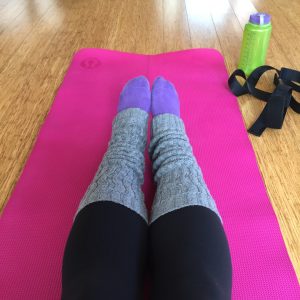
Namastay in the office …and still get a mindfulness break!
Everyone has a work rhythm, and paying attention to yours could be the trick for enabling yourself to access your best work.
For me, I am an early bird and a night owl. But that 3pm timeframe kills me. So for early mornings and late nights, I need a large desk with space to spread out and a few whiteboards for hammering out the details for my big ideas. Then for that one-hour block in the afternoon, I need my work space to include a place for short brain breaks: maybe a little space for yoga, a “zen den” for meditation, or a couch for recharging.
Figure out what you need, and build it up around you. Ultimately, your office space should should fit your work needs. In essence, it should set you up to become your most productive, most creative self.
I hope you’ll come visit my new space at 2216 South Street!
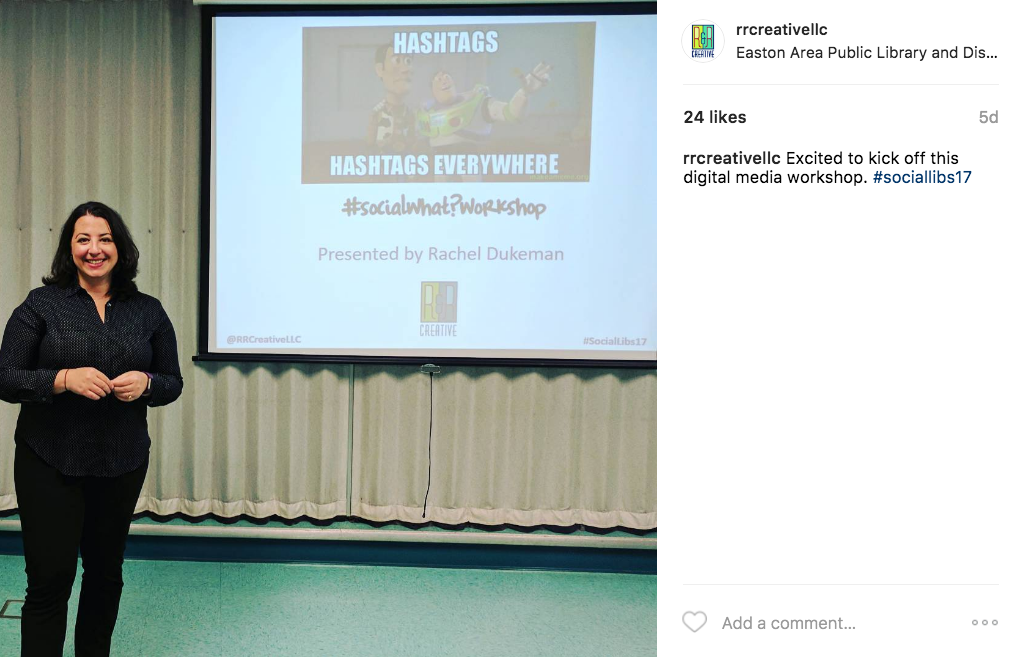
by Rachel Dukeman | May 12, 2017 | Workshop
What a day! On Friday, May 5, 2017, Rachel Dukeman led a Digital Media Marketing Workshop for Libraries at the Easton Public Library. We discussed incorporating research, planning, creativity, and consistency into digital marketing strategy. We covered the best ways to use social media and digital marketing to increase impact — from building user personas to outlining content by tone, frequency, and the right site / platform for each persona.
Attend the workshop? Check your email for the slides in two formats: Full Slides (one per page) or Handouts (4 per page).







